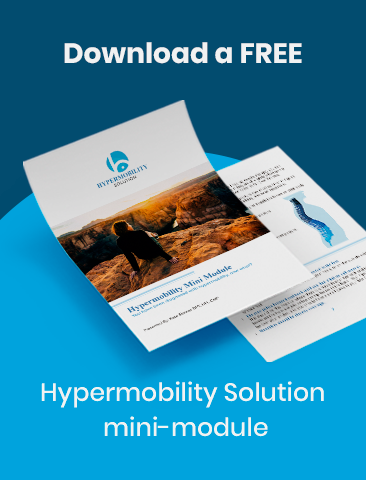Setting yourself up for success may seem like a broad concept, but it really can be simplified down to making your daily life as easy as possible. And, by doing so, you’re committing to caring for yourself with a regular exercise program and maintaining a good diet and good mental health.
Get help with the bigger things that happen occasionally
Things like gardening, snow shoveling, and home remodel work that tends to be lots of hours over a short time and are hard to gear up for.

Don’t have more help than you need
While support for larger activities can be helpful, avoiding all activities is detrimental. Stay connected and active in your family, and remember you can do lots of things, so don’t give up the things you can do.
The focus is more on working smarter, not harder
Adjust your office set up, your car, your kitchen to make things as easy on yourself as possible. Then push yourself in your exercise where you can control how much more you do. Your focus should always be on living as a high quality of life as possible.

Chronic illness
While this series addresses the basics of hypermobility dysfunction, it does not treat chronic illness, which can also be associated with hypermobility.
Chronic illness would affect those people with autoimmune disorders of all types, other medical issues such as diabetes, nutritional problems, neurologic disorders, which can negatively impact and be impacted by hypermobility.
These complex issues can make it harder to address hypermobility due to their effects and require more significant intervention.
Nutrition can be a factor for some, but not all people. There is always a physical hierarchy and one of the main concepts and surviving versus thriving. If your body is working on surviving, you will not be able to thrive, which is where you do all the fun and exciting things in your life.
This is when you need to make sure you have good overall health first, or you will find limited success with the things in this program.
Proper Nutrition
You need to eat good quality food to have the building blocks to heal and make the changes you are looking for.
If you eat a lot of junk food and processed foods, look at cleaning up your diet and talk with your doctor about some useful options like the Whole 30 if you like a more disciplined approach.
If you already eat pretty well, then this will not likely have a significant effect on you. If you are not sure, keep a food journal for a week and see how you stack up.
Infections
Infections can also put a hold on your progress. This could be anything from a cold to pneumonia to an abscessed tooth.
If your body is busy fighting infection, you won’t see as much progress in other areas. Always be sure to manage this first.
Mental health
Don’t forget about taking care of your mental health. Give yourself space and an option to improve.
Getting help with counseling if you are struggling will pay off physically as well.
This is not the same as your symptoms are in your head, far from it. But if you are struggling with severe depression or anxiety, it is harder to be able to do the things you need to do to improve your physical symptoms.
It can also seem unattainable without addressing mental health issues either first or in conjunction with hypermobility.
After living with long-standing symptoms, fear can be a huge barrier to starting something new or changing the way you are doing something.
Counseling can be a way to work through this one step at a time.
Long-term exercise programs
As we have mentioned before, a long-term exercise program is not only recommended but is a must to maintain improvement and continue to improve.
This doesn’t mean that you have to be miserable, but it does mean you can control how you do it.
Decide what will work best for your personality and your lifestyle. If you want to use a gym, use a gym. If you would instead do classes or videos at home, then chose that option. It is more important that, whatever you do, you can stick to and progress slowly.
Start with movements you can control avoiding impact or sudden change in direction.
Making large leaps forward almost always results in an upcoming backward slide, so force yourself to shoot for steady, gradual progression.
Can you do more this week than last week? More this month than last month? More this year than last year? Often as you look backward, you see how far you come.
General Rule for Progression – Progress 10% per Week in One Area
You want to perform exercises 4-5 days a week, and this gives you the option to alternate program sets to minimize both time and soreness as well as maximize the effect.
This is an option to build your strength and endurance over time gradually. You can adjust this program up or down based on your current fitness level.
Focus first on correct mechanics, then work on increasing your reps, finally work on improving your weight or resistance. Always in this order.
Never increase reps and weight on the same day; your goal is a 10% change per week of one area, not all areas.
One area would be either repetitions, resistance or amount of weight, time of doing something, speed, or incline. This is a pick one list, not all. Try to focus on consistency rather than progressing a particular exercise.
Being consistent will always make more significant gains than the best single workout.
How to return to old activities or start a new one
As you return to an activity or start a new one, you will have to apply the same principles to it and think about how you are doing it to make sure you are staying within your guidelines.
For example, say you want to return to playing golf. It is an activity that uses speed and rotation, which can be harder on your body, but it doesn’t involve impact.
To do this, you need first to feel like you can manage your symptoms. Then, you need to make sure you can control the movements necessary for your desired activity, in this case, rotation. Start working through the swing movements in your living room where you aren’t going to be tempted to move too fast.
Start with the part of the activity with the least amount of strain and work on your control. Then move up to the next step, focusing on these difficult movements with 50% effort. Note: this is not 100%.
If you feel successful at 50%, next time, try for 75%. If that goes well, try for the 3rd time and work into your 100% effort. If this feels good, now you are ready to return back to normal activity.
Notice it takes some effort, but you can do it if you are motivated, and it is something you enjoy or want to do. Also, notice I didn’t say grab your clubs and just start with nine holes. It takes a little more than that.
Looking for an online support team? Join the Hypermobility Solution Facebook Group here!

About Kate

Kate Skinner is a Doctor in Physical Therapy, co-founder of Great Divide Physical Therapy, and creator of Hypermobility Solution.
Recent Posts




